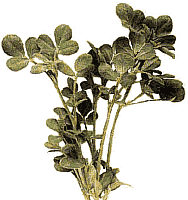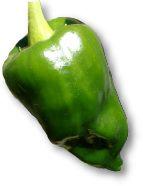Fenugreek Benefits
The Many Benefits of Fenugreek - Order Fenugreek Seed Fenugreek (Trigonella foenum-graecum) is one of the most amazing herbs that you will ever have in your garden. In fact, this herb has been cherished since antiquity. The name came from the Latin word for "Greek hay" due to its looking very much like clover, a common hay.
Fenugreek (Trigonella foenum-graecum) is one of the most amazing herbs that you will ever have in your garden. In fact, this herb has been cherished since antiquity. The name came from the Latin word for "Greek hay" due to its looking very much like clover, a common hay.
Even though the Greek's brought its name, the plant was brought into cultivation in the Near East first in and around the area of Iraq & Egypt. There is proof of this in the archeological remains of charred & desiccated seed in the digs of that area spanning back 6,000 years ago.
Fenugreek Benefits Are Many
Fenugreek is utilized all around the world for various uses from culinary, medicinal, to even hay for animals (this is very popular in sub-Saharan Africa). Some countries use Fenugreek for its fragrant properties in fragrances. The fenugreek seed is used more than any part of the plant.Culinary uses include pickles, curry spices, chutneys, young salad greens, pot herb, and fenugreek extract is even used to make imitation maple syrup! Its most widely used application is Indian curries. Indian food uses a lot of curry powders that bring more flavors to otherwise bland food. In curry powder, you will find a mix of herbs including cardamom, pepper (hot & bell), turmeric, cinnamon, cumin.
Oriental cooking also uses it as an ingredient in oriental sauces. Other unusual places that fenugreek will show up include ice creams, caramel, icing, chewing gum, gelatins, and other sweet confectionery treats!
In addition, many people like to drink fenugreek as a tea. Some places make "fenugreek coffee" from roasted seeds.
Commonly used in sprouts. Fenugreek sprouts are packed with Vitamins A, B, C, & E. Most people don't like them to green out before consuming as sprouts.
Fenugreek Helps Milk Production
Medicinally, this herb has phytoestrogens and is famous as a breast milk stimulant in helping mothers lactate. It is considered a galactagogue in that it helps increase lactating women's milk supplies. It is also said to cause breast enlargement.
Just like anything, it needs to be used in moderation with the advice of a certified herbalist. Pregnant women do not need to consume Fenugreek since it may bring premature labor, so be aware.
Fenugreek Diabetes Aid For Blood Sugar Regulation
It is also a potent diabetes herbal remedy in that it helps to bring down the blood sugar levels of both type 1 & 2 patients consuming it. The sugar levels are thought to drop blood glucose because the seeds are rich in dietary fiber. The fiber contributes to the lowering of blood sugar spikes.
In China, Fenugreek seeds are called Hu Lu Ba where it is thought to help kidney function, common cold, relieve pain, joint pain, & help with hernias.
Cholesterol Levels Can Be Controlled With Fenugreek
In recent studies it has also been found to help lower elevated cholesterol as well as triglyceride blood levels (even in diabetics!). The good thing is that it doesn’t lower the beneficial high-density lipoprotein (HDL) cholesterol levels in the blood. Lowering cholesterol is one of the top issues in American health these days.Other Herbal Uses of Fenugreek
Fenugreek is great for anyone having issues with any sort of gastrointestinal inflammation such as acid reflux. It will coat & soothe the stomach & intestine lining.It is thought to have some weight loss properties because it supports glucose and carbohydrate metabolism.
It is thought to have anti-aging properties..
A throat gargle prepared from fenugreek seeds is a good remedy for treating sore throats. To prepare the oral concoction, you first mix 2 tablespoons of fenugreek seeds a liter of cool water. Then gently simmer over low heat. Cool to a temperature you can tolerate on your throat and gargle several times a day.
It can also be applied to the skin to treat inflammation. It soaks into the skin to help reduce swelling, redness, and even pain on the skin. Therefore it is used to treat skin conditions such as sunburns, boils & abscesses, acne, and eczema.
On top of that (pun intended), it is even thought in some circles (pun intended again!) to be a breast enlarger by some, nice for the ladies hoping to catch a guy (or keep one!) Anyway, seriously... this herb has a ton of uses medicinally and has been used for centuries.
Are There Any Side Effects to Using Fenugreek?
Just beware when consuming Fenugreek that you do it safely. Know your body, and research it thoroughly. Fenugreek can have some side effects when consumed orally including bloating, flatulence, & diarrhea. It is also possible to experience skin irritation when used topically.
Also, as already noted, pregnant women should not use Fenugreek until maybe after the baby is due to help induce labor. Even then, it should be used under the supervision of a doctor & professional herbalist.
How much Fenugreek is usually prescribed for human consumption?
Fenugreek benefits come at usually 6 grams of fenugreek seeds per day is prescribed, but every person's needs are different. We don't make recommendations on this or make any medical claims to the health benefits, we simply report what others are saying about this herb's medicinal properties. Seek a licensed professional herbal doctor.
Fenugreek Benefits Nutritionally
Fenugreek seeds are very nutritious. They contain protein, potassium, niacin, vitamin C, and the phytoestrogen known as diosgenin. It also has some other constituents in more minute amounts including the amino acids lysine and L-tryptophan, alkaloids, and a host steroidal saponins (yamogenin, diosgenin, neotigogenin, and tigogenin).
Details about How to Grow Fenugreek:
- Other Common Names: Greek Hay, Sicklefruit, Cooper's Clover, Fresh Menthi, Bockshornklee.
- Growth Height: 18-24 in.
- Type: Half-hardy annual.
- Growing Zones: 6 - 10
- Flowers: Summer and Fall.
- What Does Flower Look Like?: Creamy white. Pea-like flower.
- Type of Foliage: Cuneate. Light green.
- Germination: Easy
- Outside Sowing: Sow 1/4 inch deep (6 mm). Plant in mid-spring when soil temperature are higher than 60°F (16°C). Within a week, you should see sprouts breaking the surface of the soil. Space seedlings about 4 - 6 inches apart. Sow Inside: You can, but I wouldn't since it is so easy to grow outside.
- Requirements: Full sun. Needs rich soil with good drainage with a pH of 6-7. Keep well watered.
How to Grow Fenugreek Seed in Your Herb Garden
So now that you know the benefits of Fenugreek, wouldn't you like to have a nice supply of this herb in your garden every year? Sand Mountain Herbs has a plentiful supply of Fenugreek for you to order online! Click on the link below to order your seed now!Order Fenugreek Seed
 Want to Grow A Heirloom Vegetable Garden?
We have over 100+ Seeds.
Want to Grow A Heirloom Vegetable Garden?
We have over 100+ Seeds.
